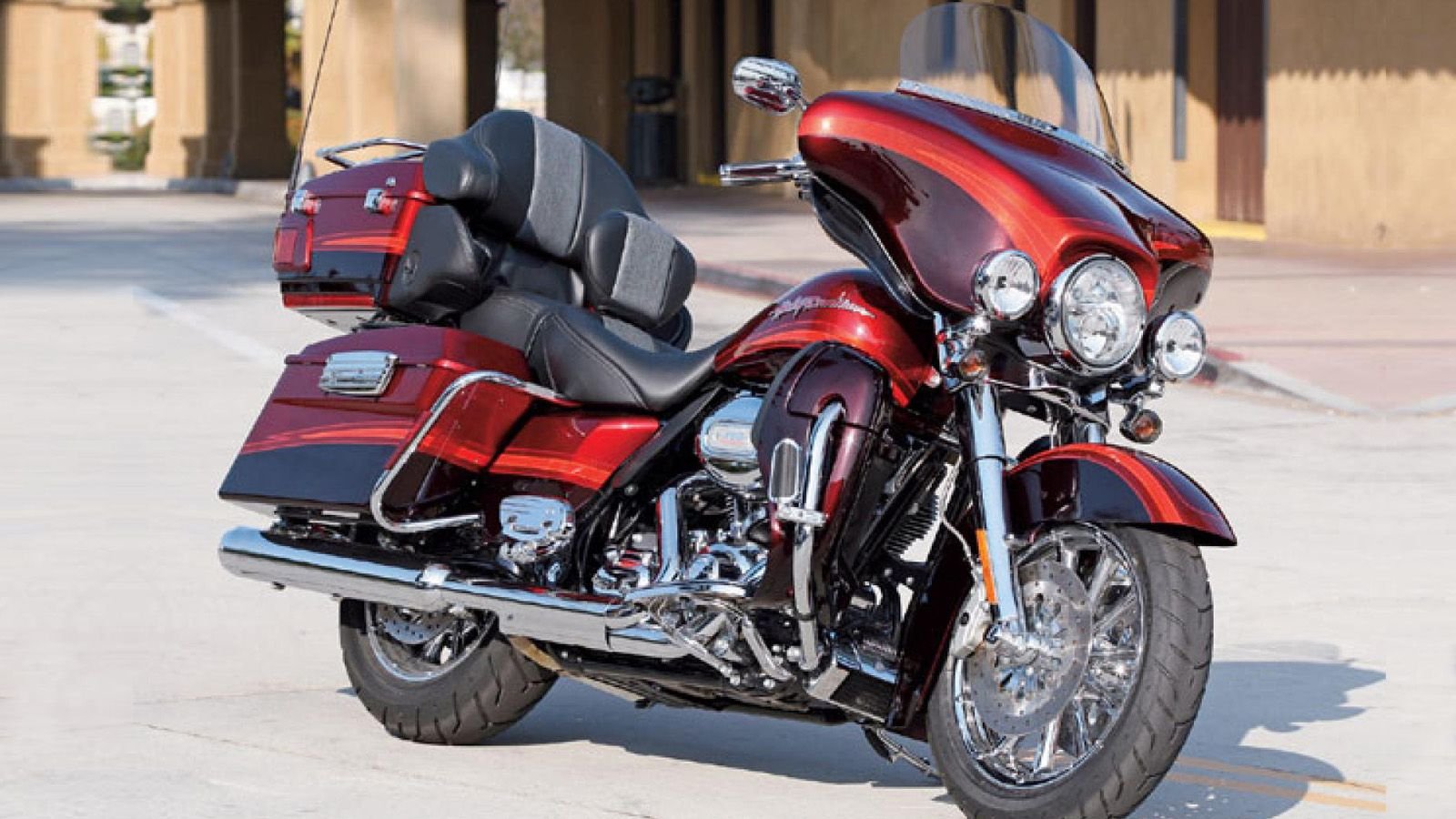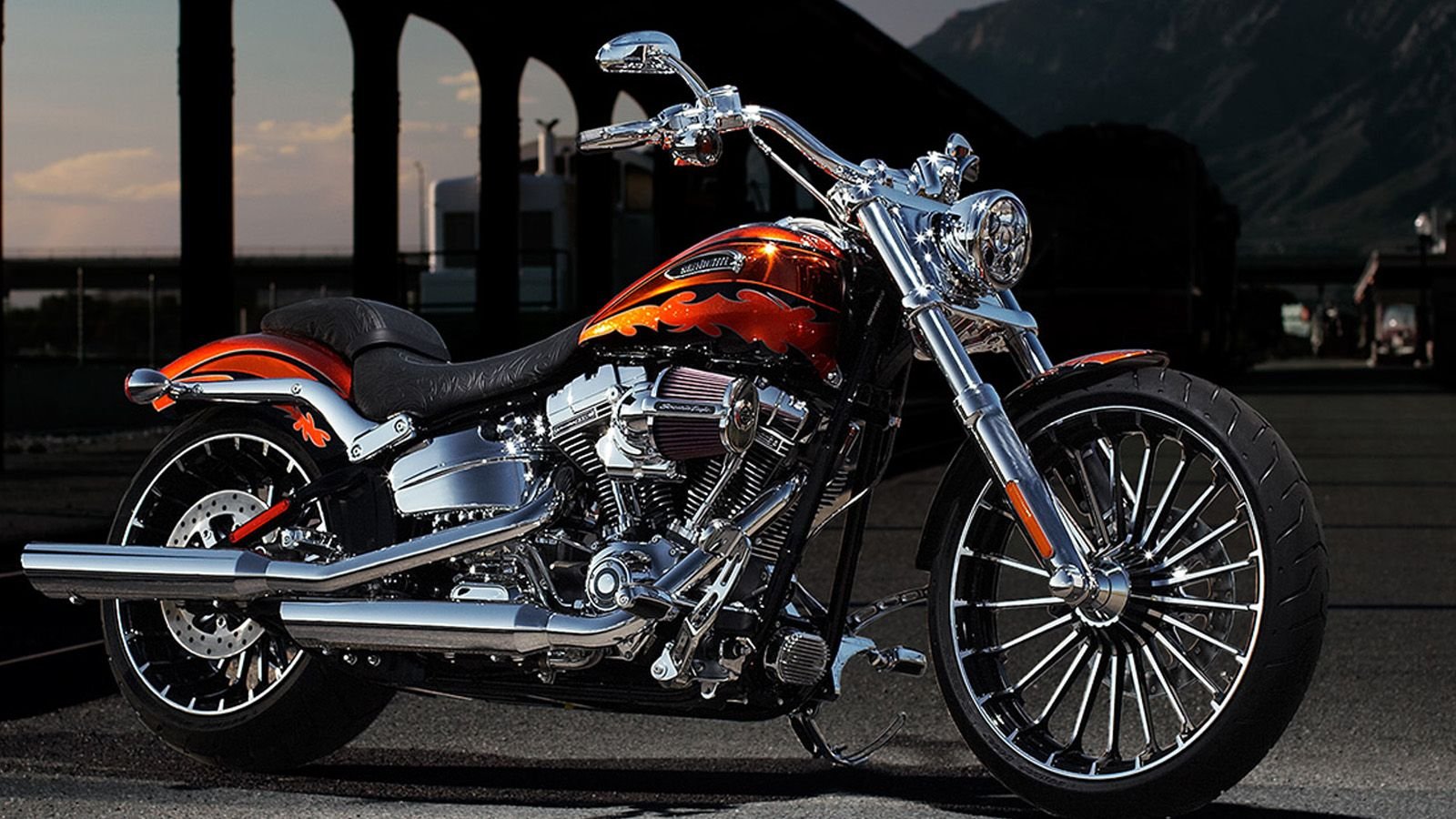The ABCs of Harley-Davidson Custom Vehicle Operations
Daily Slideshow: CVOs are good-looking factory customs for discerning buyers.




















Top Choice
To the uninitiated, CVO is short for Custom Vehicle Operations. To owners, a CVO is about having something unique with one-year-only paint and accessories. To the Motor Company, CVO owners are seen as “alpha customers, those who are brand loyal and pride themselves on riding the best there is.” For everyone else, CVOs are just good looking bikes — but how did it all start?
Performance Name
CVO motorcycles were originally known as Screamin' Eagle models. Started in 1999, the program was essentially a market test, and only officially named Custom Vehicle Operations a decade later. The Screamin' Eagle trademark originates around 1988 as a line of high-performance parts for production street machines. The first CVO/Screamin' Eagle motorcycles were the 1999 FXR2 and FXR3, followed by the 2000 FXR4.
>>Join the conversation about the Custom Vehicle Operations right here in HDForums.com.
Corporate Nostalgia
Starting the CVO program was largely a corporate decision to address the competition. As stated by Jeff Merten, then Director of Marketing for Harley-Davidson Parts & Accessories, the company wanted to build “a limited number of high-end custom niche vehicles, as some of our competitors have been doing.” Business aside, the decision to reintroduce the FXR was also spurred by nostalgia.
>>Join the conversation about the Custom Vehicle Operations right here in HDForums.com.
List of Reasons
Introduced in 1982 as the FXR Super Glide II, the FXR platform sadly went out of production in 1995. According to Merten, there were four reasons to reintroduce the FXR in 1999. The first was simply overwhelming demand. Harley-Davidson was listening to their customer base, and as Merten stated, “It was requested by our customers.” The second reason was logistics, and there was space available at the York, Pennsylvania plant.
>>Join the conversation about the Custom Vehicle Operations right here in HDForums.com.
Act Now
The third and fourth reasons were market driven, involving sustainability and customer loyalty. The Motor Company wanted to test its ability to “build and make money on a highly customized, limited-production model.” Lastly, the FXR offered an “incremental sales opportunity”— which is corporate jargon that meant existing customers would not buy a new Harley-Davidson unless it was an FXR.
>>Join the conversation about the Custom Vehicle Operations right here in HDForums.com.
Space Available
Production capacity played a large role in the formation of the CVO/Screamin' Eagle program. 'Building 42' at the York plant was available after manufacturing of the military-bound Rotax-powered MT500 had come to an end. Tasked with starting FXR2 production was Jim Hoffman of Harley-Davidson Parts & Accessories. Pictured above is a 2007 Screamin' Eagle Dyna FXDSE. The Dyna platform replaced the FXR in 1995.
>>Join the conversation about the Custom Vehicle Operations right here in HDForums.com.
Frame Production
Working on a tight schedule, Hoffman dismissed one of the myths that still surround the FXR2 and the start of the CVO/Screamin' Eagle program. He stated, “No, contrary to rumors, we didn’t find 1800 old frames in a warehouse someplace.” Instead, the FXR frame was put back into production. Above is the first non-FXR Screamin' Eagle, a 2000 Screamin' Eagle Road Glide FLTRSEI1, which featured the Twin Cam engine in 95 cubic-inch displacements.
>>Join the conversation about the Custom Vehicle Operations right here in HDForums.com.
Discerning Custom
As Harley-Davidson's first factory custom, the 1971 FX Super Glide could be considered the grandfather of all CVOs. Unlike one-off racing machines, CVOs are factory customs destined for the street, built by a small team of engineers and stylists. Pictured above is one such example, a 2007 Screamin' Eagle Softail Springer FXSTSSE that introduced the 110 cubic-inch Twin Cam.
>>Join the conversation about the Custom Vehicle Operations right here in HDForums.com.
Exclusive Line
In 2009, the CVO program was officially named and Screamin' Eagle performance parts became its own line of products. The naming convention meant that CVO finishes, accessories, and larger displacement engines were now only available to CVO owners. Above is a 2009 CVO Ultra Classic Electra Glide FLHTCUSE4, which retained the Screamin' Eagle logo on its air cleaner cover and rear panel of the trunk.
>>Join the conversation about the Custom Vehicle Operations right here in HDForums.com.
Eye of the Beholder
Critics say that CVOs do not hold their resale value and that their production has become streamlined. While this is all true, CVOs have an esoteric value. What started as a market experiment has become an institution that produces gems such as this stunning 2014 CVO Breakout FXSBSE. Motorcycles might not make the world a better place, but CVOs make for good 'eye candy' — and looking costs nothing.
>>Join the conversation about the Custom Vehicle Operations right here in HDForums.com.
For help with your maintenance and repair projects, please visit our How-to section in the forum.

